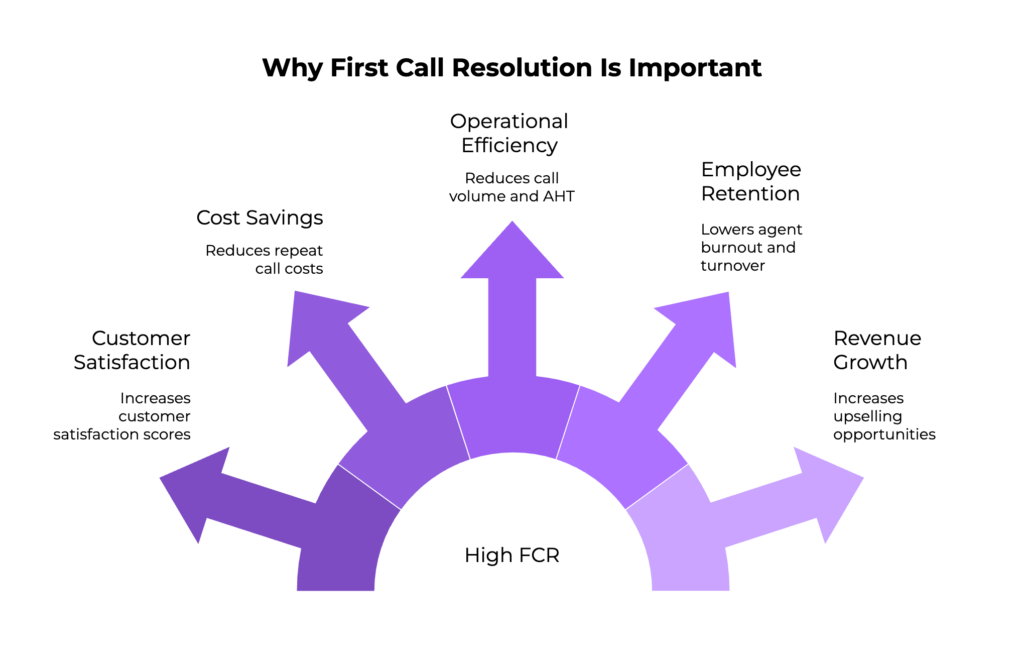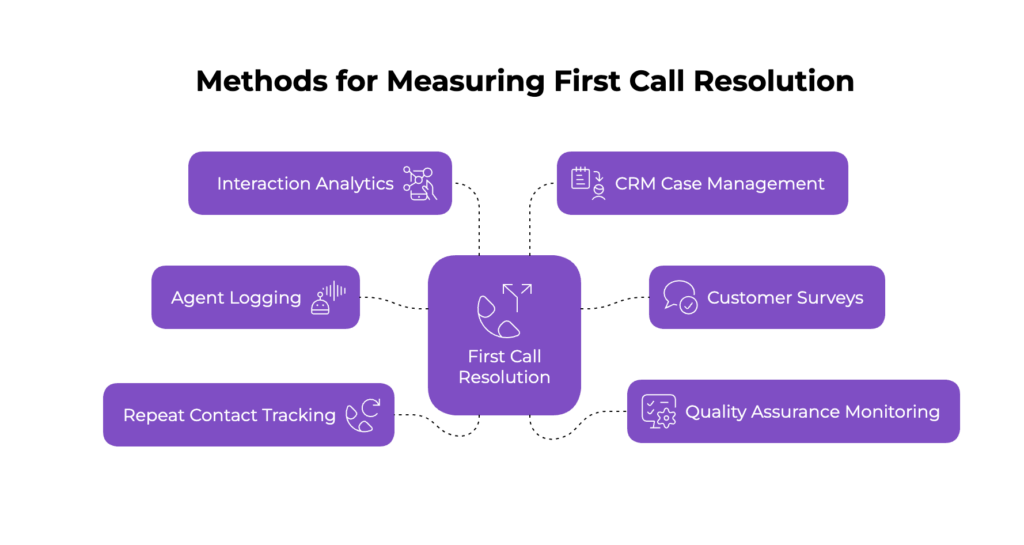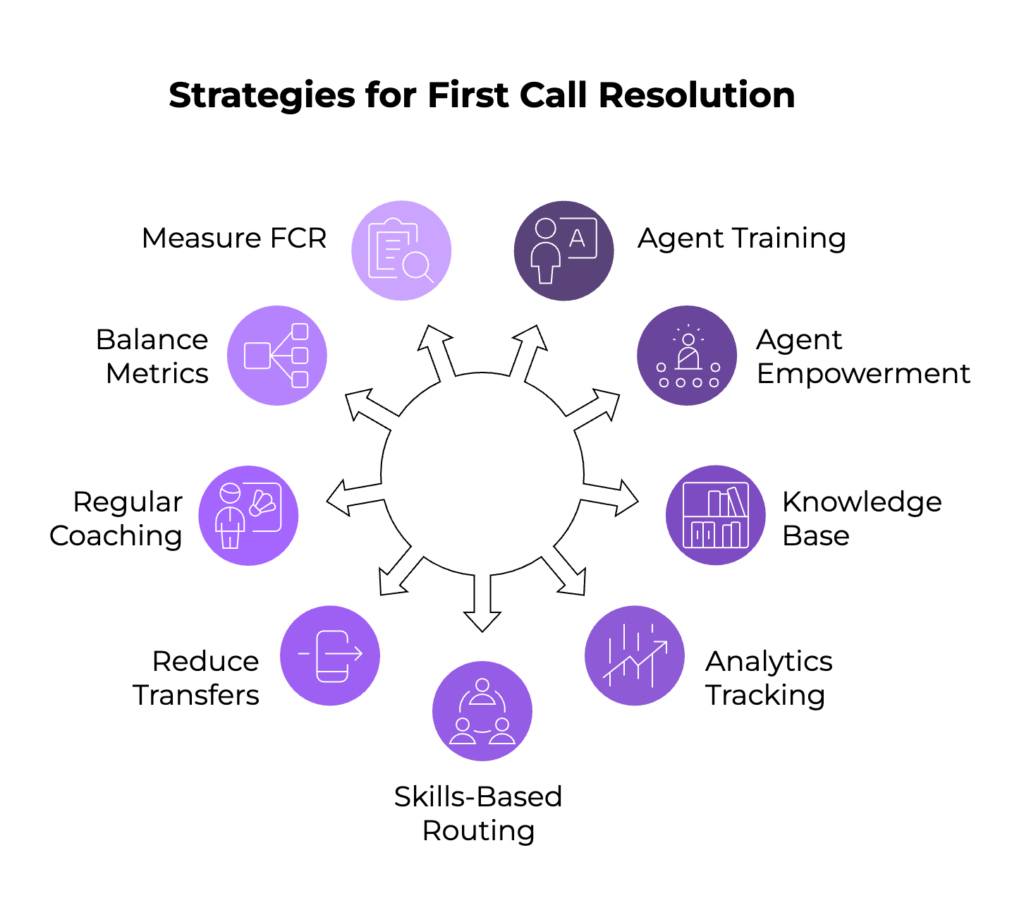Master First Call Resolution (FCR) to boost customer experience and reduce costs. Learn how to measure and improve FCR for better contact center performance.
A customer dials in for help.
One hold, two transfers, and zero solutions later, their frustration peaks – and your brand pays the price.
Customer service excellence has become a business essential. Of all the metrics used in contact centers, First Call Resolution (FCR) often carries the most weight. It’s a direct signal of how well your team solves problems on the first interaction.
High FCR rates mean fewer repeat calls, smoother operations, and more satisfied customers. That translates into lower costs and better retention.
This guide takes you deep into FCR: how to measure it, what affects it, and how to improve it.
Get. Set. Go.
See how Kayako helps you hit FCR fast.
What Is First Call Resolution (FCR)?
First Call Resolution (also known as First Contact Resolution) refers to the percentage of customer inquiries, problems, or requests that are resolved during the initial interaction with the contact center, without the need for follow-ups. This metric applies to calls, chats, emails, and multichannel contact centers.
There is nuance in its definition depending on the channel. For voice and live chat, resolution at the end of the call or chat is counted as FCR. For email, some organizations consider a resolution within one business hour to qualify as FCR. This distinction matters because customers increasingly expect quick, effective answers.
There are two key FCR variants to track:
- Gross FCR includes all contacts, regardless of whether the issue was realistically resolvable in the first interaction.
- Net FCR excludes calls that inherently cannot be resolved at first contact (such as physical move requests or hardware repairs). Net FCR is a more accurate reflection of both agent capability and system effectiveness, as recommended by MetricNet®.
|
Knowing which version you’re measuring is key to making the data meaningful. But what makes FCR crucial for customer service?
Why Is First Call Resolution Important?
 FCR is often hailed as the “golden metric” in customer service because it directly influences key performance areas: cost efficiency, customer loyalty, and employee satisfaction.
FCR is often hailed as the “golden metric” in customer service because it directly influences key performance areas: cost efficiency, customer loyalty, and employee satisfaction.
Improving FCR drives multiple business benefits:
- Customer Satisfaction: “Every 1% improvement in the FCR rate increases the interactional Customer Net Promoter Score by 1.4 points, as reported by SQM Group.
- Cost Savings: Bevery 1% improvement in First Call Resolution can save a contact center approximately $286,000 annually in operating costs. Incremental FCR improvements can therefore yield substantial financial returns.
- Operational Efficiency: Better FCR reduces overall call volume, shortens Average Handle Time (AHT), and improves service levels.
- Employee Retention: High FCR correlates with lower agent burnout and turnover, creating a more stable and productive workforce.
- Revenue Opportunities: Satisfied customers are more receptive to upselling and cross-selling during service interactions.
Try Kayako – turn first touch into first-time wins.
How to Measure First Call Resolution

Measuring First Call Resolution accurately is both essential and challenging. There are several widely adopted methods, each with its strengths and limitations:
- Agent Logging: Agents indicate whether the issue was resolved during the contact. While straightforward, this approach can be subjective and prone to inflation, especially if linked to performance metrics.
- Customer Surveys: Post-call surveys conducted through IVR, email, or SMS ask customers whether their issue was resolved. These responses provide valuable customer perspectives but depend on response rates and interpretation.
- Repeat Contact Tracking: Contact centers use system data to detect if a customer reaches out again about the same issue within a defined time period. This objective method is increasingly popular due to its ability to track behavioral patterns.
- Quality Assurance Monitoring: QA teams listen to recorded calls or review transcripts to assess whether resolution occurred. While labor-intensive, this method offers deeper qualitative insights.
- Interaction Analytics: AI-driven analytics can evaluate voice and text interactions, linking them to repeat contacts and identifying intent, emotion, and outcome. This provides scalable insights across high volumes of interactions.
- CRM Case Management: Tickets and cases that are reopened or require follow-up are tracked to identify unresolved interactions.
In terms of implementation, many organizations track FCR weekly or monthly, analyzing performance across agents, teams, and channels. For more accurate reporting, best practice is to distinguish between gross FCR (all contacts) and net FCR (excluding issues that inherently require multiple contacts).
A single method rarely provides the full picture. The most insightful measurement frameworks combine analytics, surveys, and internal reporting to produce a well-rounded view of true resolution rates.
What Is a Good First Call Resolution Rate?

There’s no universal standard for a “good” first call resolution rate, as performance depends heavily on industry, customer expectations, and service complexity. However, established FCR benchmarks provide helpful reference points.
- Average FCR Across Industries: 69%
- The FCR rate ranges from 43% to 88%
- Top Performers: Exceed 90%, often due to strong training programs, knowledge management, and intelligent call routing.
- Industry-Specific Averages:
- Not-for-profit, and Insurance industries’ call centers lead the pack with a good FCR rate average of 73-75%
- Manufacturing: 84%
- Outsourcing Services: 79%
- Finance: 70% (ContactBabel)
- Not-for-profit, and Insurance industries’ call centers lead the pack with a good FCR rate average of 73-75%

While high rates are desirable, context matters. Rates below 60% typically signal deeper structural issues – like outdated systems, insufficient agent training, or overly complex workflows. Conversely, FCR above 95% may appear impressive but often hides flaws in measurement or overly simplistic interactions that don’t represent real customer service challenges.
Instead of chasing a generic target, organizations should benchmark internally and pursue incremental improvements aligned with their industry norms, service design, and customer experience goals.
When Is a Call Considered Resolved?

Determining call resolution during the first contact may seem straightforward, but real-world complexities often make it a nuanced challenge.
While many organizations treat resolution as a binary outcome – solved or unsolved at the end of the call – the reality is more layered. Traditionally, resolution status is logged based on agent judgment.
This approach is easy to implement, but it opens the door to potential bias or performance-driven manipulation, especially when agents are incentivized by high first contact resolution (FCR) rates.
To get a clearer picture, companies are increasingly combining various resolution signals:
- Agent Input: Commonly used but prone to subjectivity and bias, particularly under performance pressure.
- Customer Feedback: Post-call surveys can validate perceived resolution, though they may fail to capture issues that emerge later.
- Backend Fulfillment Monitoring: Even if an agent provides a correct answer or initiates a fix, delays in processes like shipping, billing, or refunds can lead to repeat contacts.
- Time-Based Closure Windows: Many organizations consider a case resolved if no follow-up occurs within a specific time frame – typically 7 to 30 days.
- Multi-Signal Validation: The most reliable method triangulates agent input, customer feedback, and system-tracked repeat contacts to ensure resolution metrics reflect both immediacy and actual outcome.
By integrating these sources, businesses can move beyond surface-level FCR metrics and capture a truer measure of issue resolution – one that reflects the full customer journey and supports long-term satisfaction.
| Turn resolution into revenue
-> Try Kayako Today |
Challenges of Achieving High First Call Resolution
Despite its value, consistently achieving high FCR rates remains a challenge for many organizations. The barriers are often rooted in a mix of outdated systems, limited agent empowerment, and evolving customer behavior. Tackling the challenges of first call resolution requires more than frontline fixes – it calls for structural change.
- Skill and Training Gaps
- Agents often lack the technical depth or troubleshooting skills needed to handle complex or uncommon issues. Without robust training, they’re more likely to escalate or defer resolution.
- Limited Access to Information
- Real-time resolution is nearly impossible without fast, reliable access to accurate knowledge. Outdated or fragmented knowledge bases force agents to rely on guesswork or put customers on hold.
- Restricted Agent Authority
- Rigid policies or approval chains often prevent agents from making critical decisions. Even highly capable staff are blocked by workflows that require managerial sign-off or cross-department collaboration.
- Complex Issue Structures
- Problems that span multiple departments or involve external vendors slow down resolution. These multi-step cases are rarely solvable in a single interaction.
- Disconnected Technology Systems
- When CRMs, ticketing platforms, and internal tools don’t talk to each other, agents lose valuable time toggling between systems, which leads to delays and errors.
- Customer Behavior Patterns
- Some customers make repeat contacts intentionally – testing consistency, seeking alternative answers, or negotiating outcomes – especially in sectors like telecom and finance.
- Failed Self-Service Channels
- Broken IVRs, unclear chatbot flows, or dysfunctional portals push frustrated users into the contact center with pre-escalated issues that are harder to resolve on first contact.
Improving FCR requires more than agent coaching. It demands an integrated approach: redesigning processes, breaking down silos, and empowering agents with the tools and authority to resolve more during the first touchpoint.
Best Practices for First Call Resolution

Here are the best practices for improving First Call Resolution (FCR)
- Define FCR clearly for your business
- Invest in comprehensive agent training
- Empower agents with decision-making authority
- Maintain a robust knowledge base
- Use analytics to track repeat contact
- Implement skills-based routing
- Streamline cross-functional processes
- Reduce internal transfers
- Coach and support agents regularly
- Use multiple methods to measure FacR
- Take a strategic, data-driven approach
- Improve self-service design
- Collect and act on customer feedback:
- Align incentives with FCR:
- Track the full customer journey
When these efforts are embedded into daily operations and leadership priorities, FCR becomes a powerful engine of growth – not just a contact center KPI.
Tools and Technologies to Support First Call Resolution
Modern contact centers rely on a wide range of technologies to improve FCR. These tools empower agents, increase visibility, and drive operational efficiency.
- Knowledge Management Systems: Centralized, searchable repositories of updated product and process information.
- Interaction Analytics: AI-driven speech and text analytics to detect repeat contacts, analyze sentiment, and root causes.
- AI Coaching Platforms: Tools like Kayako provide real-time guidance to help agents improve soft skills, empathy, and decision-making.
- Robotic Process Automation (RPA): Automates repetitive tasks like data entry and status updates, freeing up agents to focus on resolution.
- Omnichannel Contact Platforms: Integrate customer data from calls, emails, chats, and self-service to provide a 360-degree view of the customer journey.
- Visual IVR and Co-Browsing Tools: Improve self-service success and allow agents to guide customers through complex tasks in real time.
- Post-Interaction Survey Systems: Collect resolution data via SMS, IVR, or email to validate FCR and identify improvement areas.
By leveraging the right mix of tools, companies can scale their resolution capabilities without sacrificing quality or customer experience.
Book a demo of Kayako’s solution.
Final Thoughts
Improving first call resolution unlocks far-reaching gains – from reducing costs and call volume to strengthening customer loyalty and agent engagement. It serves as a powerful indicator of how well your people, processes, and platforms work together to meet customer needs the first time.
Sustained FCR success comes from more than metrics. It takes clear definitions, empowered frontline teams, connected technologies, and a deep understanding of the customer journey. Organizations that embed FCR into their operational DNA not only elevate service, they gain a competitive edge in experience, efficiency, and revenue.